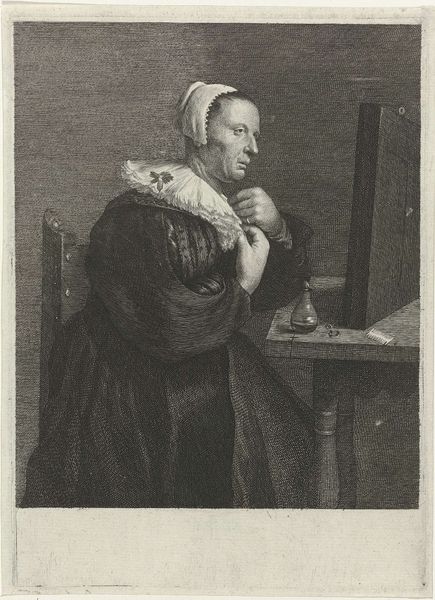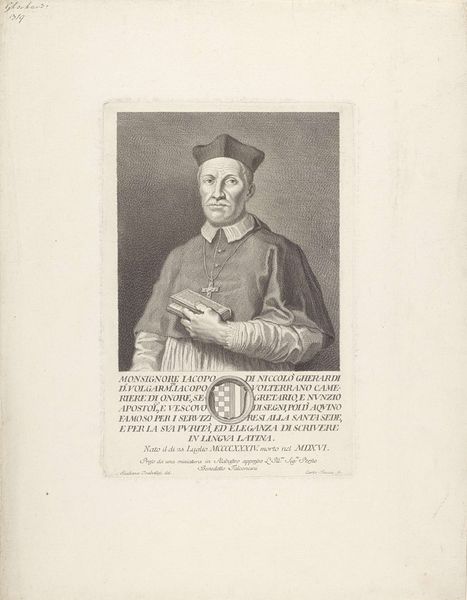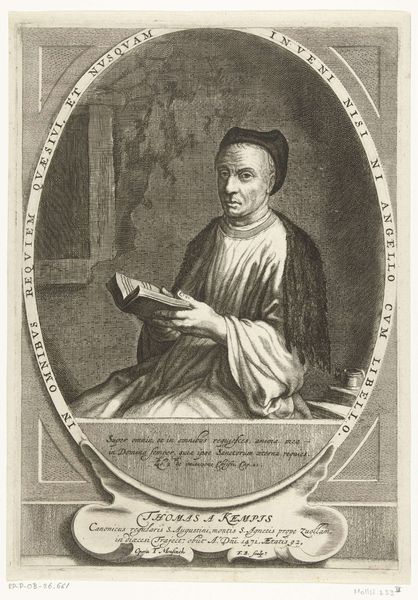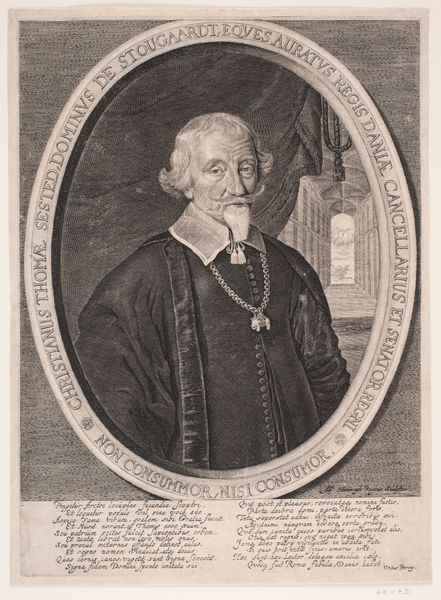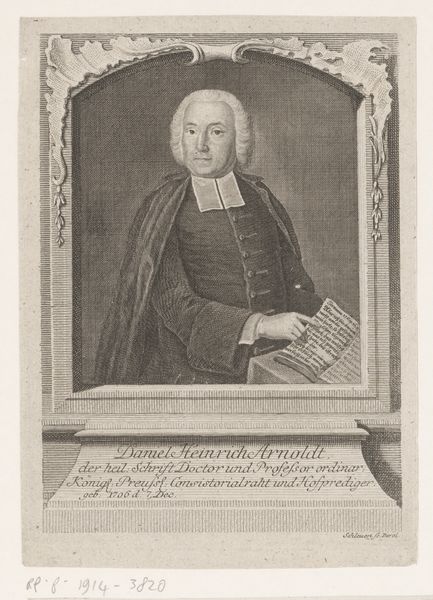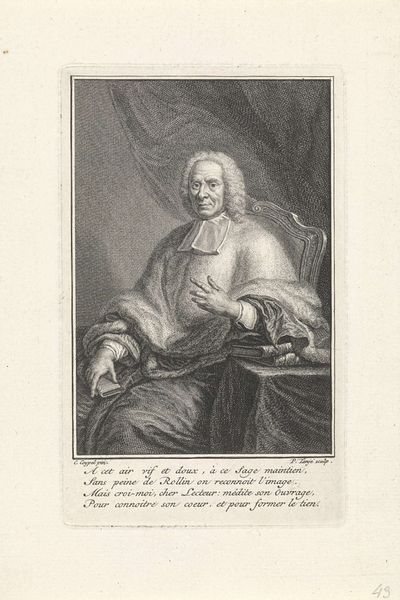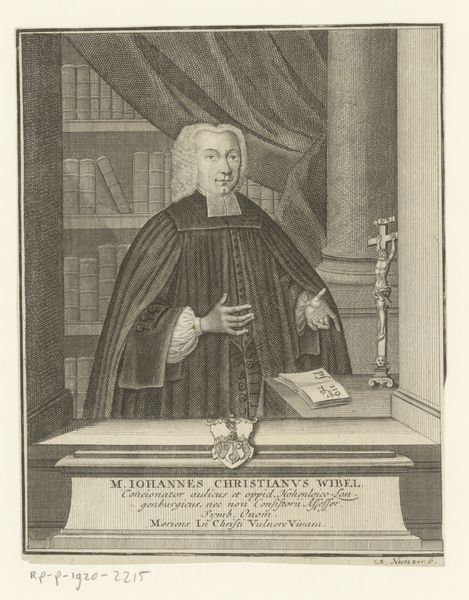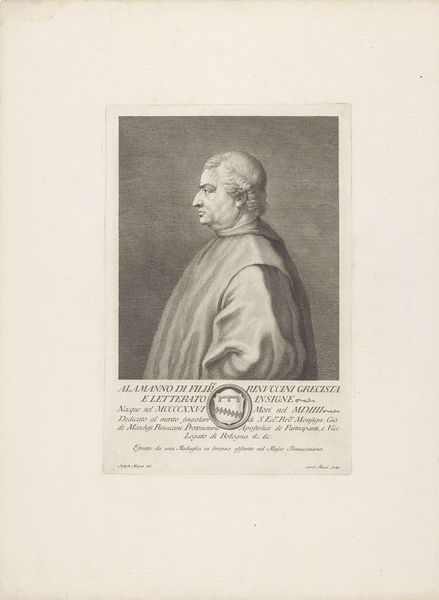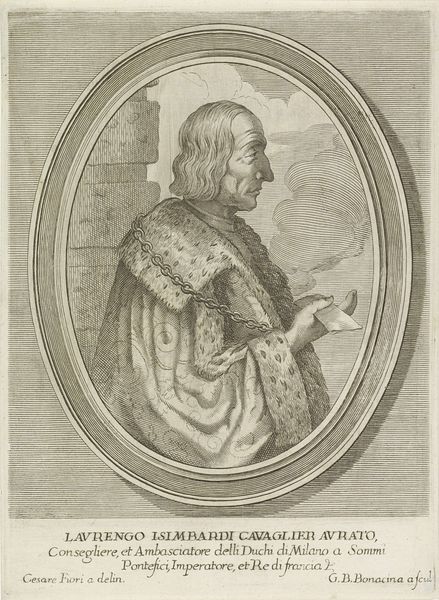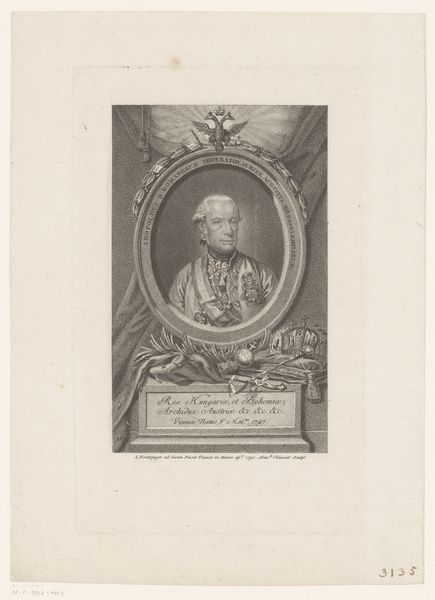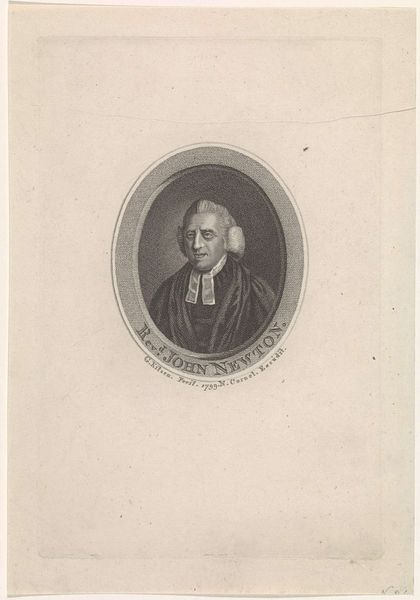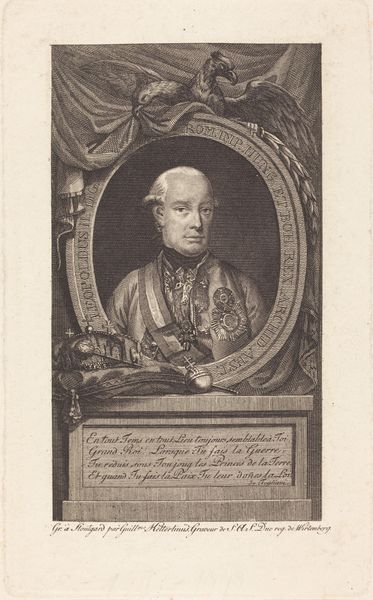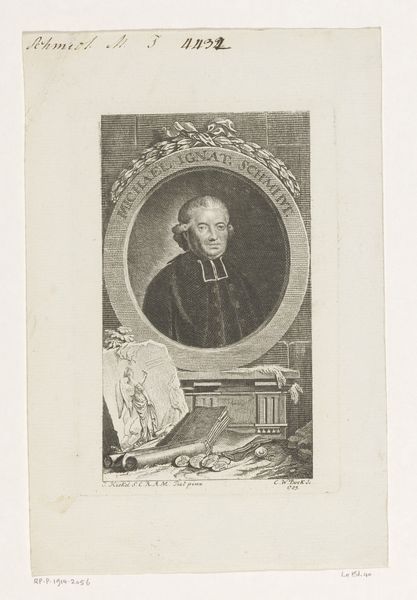
metal, engraving
portrait
baroque
metal
old engraving style
history-painting
academic-art
engraving
Dimensions: height 324 mm, width 216 mm
Copyright: Rijks Museum: Open Domain
Editor: So, this is Pieter Tanjé's "Portret van Thomas-Philippus D'Alsace et du Boussu," created sometime between 1716 and 1761. It's an engraving, and it's got such a serious, almost imposing mood. All those crisp lines! What catches your eye when you look at it? Curator: You know, what strikes me is the incredible control Tanjé has over the light and shadow. See how he uses the varying density of lines to create form? Almost sculpturally. And then, imagine the sitter, so important that he needed not only a portrait, but one immortalized in metal. How do you think his personality is being portrayed, what’s the feeling behind that imposing mood, as you called it? Editor: It's like they wanted him to look wise, a pillar of the community or the church, with that whole wall of books behind him! But there's a stiffness to him. Curator: Yes, that era was really striving to represent sitters as beacons of knowledge. And Baroque style in particular tends toward the theatrical, don’t you think? Every detail perfectly placed for maximum impact? Think about that cube he holds. Is it a reference to geometry? Is he offering the "building blocks" of faith or science, maybe even suggesting an architectural element? Editor: Hmm, maybe. I was just thinking it looked a bit clunky. It didn't occur to me that it might be symbolic. Curator: Art's funny that way, isn't it? Sometimes what seems obvious is really layered with meaning, and sometimes, well, a cube is just a cube. But part of the fun is trying to decipher those layers. What do you take away from this piece now? Editor: I'm seeing a bit more than just a stern guy in a chair. It makes you think about what people back then wanted to project and preserve about themselves.
Comments
No comments
Be the first to comment and join the conversation on the ultimate creative platform.
